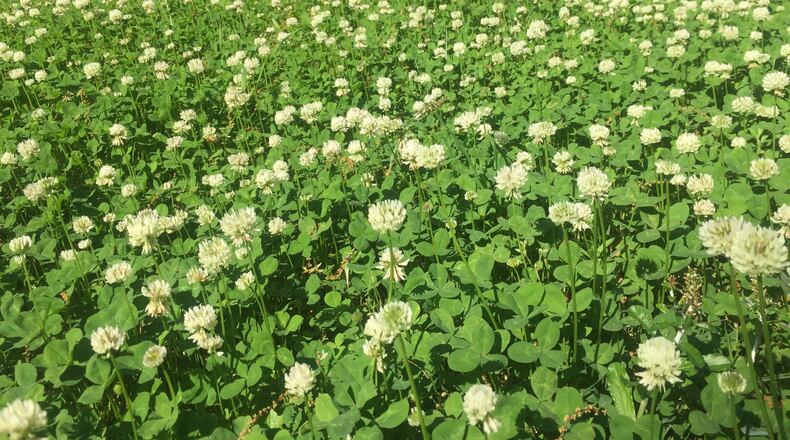Q: My wife wants to sow Dutch white clover to help the pollinators at our cabin. Can you give guidance on how to prepare a lot for growing such?John miller, Decatur
A: Before World War II, clover was commonly mixed with fescue to make a year-round green lawn that required little maintenance. After the war, herbicide companies begin promoting the idea that a lawn would look better if it contained only grass and no clover. I like the idea of planting clover to feed the pollinating insects.
White clover seed can be planted in fall or in early spring. You will do well to have a university soil test done beforehand because clover is very sensitive to soil acidity and to low levels of phosphorus and potassium (www.georgiasoiltest.com). The first physical step is to mow existing grass down to one inch high. The clover seeding rate is around two pounds per thousand square feet. The seed is tiny so it is best to mix it with several pounds of dry play sand before spreading the seed. Once you have scattered the seed, drag the area with a wide piece of carpet or a length of chain to settle the seeds onto the soil surface. It would be great to rent a roller to press the seed tightly into the soil. Apply enough water to keep the soil slightly moist for two weeks. Within a week or two you should see tiny leaves emerging. Clover pulls nitrogen from the air to feed itself and surrounding grass plants but your existing lawn grass won't get enough nitrogen from just the clover. Apply lawn fertilizer, at one-quarter the rate recommended on the bag, four weeks after the clover is planted. White clover is a perennial plant but it will typically thin out after three years, so plan to repeat the planting process when you notice the flowering is not robust.
Q: When you spray plants with liquid fertilizer do the plants absorb it through the leaves or the soil or both?Diana Mendes, email
A: Indeed plants can absorb nutrients through their leaves, but not enough of the major nutrients (nitrogen, phosphorus, potassium) to supply everything the plant needs. Micro-nutrients like calcium, iron, and magnesium can be successfully fed to plants via the foliage. As long as you follow the correct mixing instructions, spraying liquid fertilizer on leaves won't hurt plants, and it may be beneficial in some situations.
Q: Should grasses that only get a few inches high, like blue fescue and carex, be cut back before new spring growth? Would now be a good time?Donna Mendes, email
A: Unlike big grasses, such as pampas grass and maiden grass, the small evergreen grasses and sedges you noted don’t need annual pruning. I would simply wait until warm weather returns and check the plants for frozen tips. if found, it’s easy to clip off the damage and let them grow for summer.
About the Author
Keep Reading
The Latest
Featured

